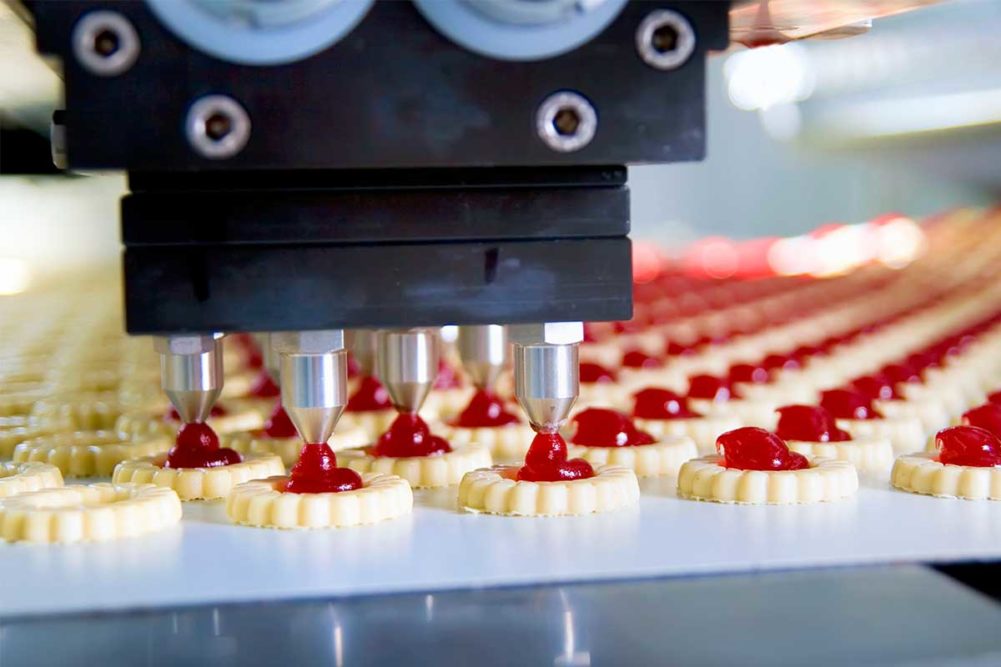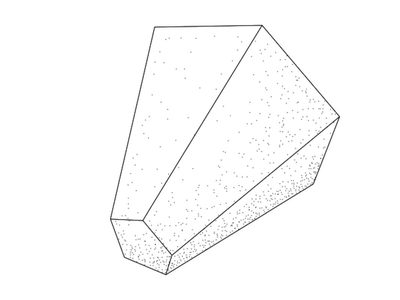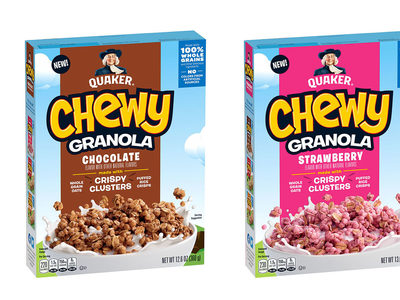Whether it’s chocolate chips, nuts or raisins, inclusions are an essential part of consumers’ favorites cookies. These inclusions often require more delicate handling, but today’s technology can maintain the integrity of these ingredients.
High-speed wirecut systems, for example, allow for the smooth cutting of cookies even with particulates.
“The ultrasonic slicer can cut chips or nuts without pulling them through the dough,” explained John Giacoio, vice president of sales, Rheon USA. “This gives a better appearance and quality to the end of product.”
Rheon equipment has had the ability to produce cookies with two fillings and can now also make cookies with two different doughs and a filling or one dough and two fillings.
Similarly, Reading Bakery Systems’ (RBS) new WCX GensisPro series uses a modular wirecut that can be upgraded to produce encapsulated, coextruded or two-dough cookies.
“At our Innovation Center, we have installed a 0.6M WCX Wirecut Machine with 14 servos so we can produce a large range of cookies for our customers,” said Sam Pallottini, director of biscuit, cookie, pet food sales, RBS.
Vane cell pumps are a suitable option for cookie producers because they gently handle larger inclusions that may otherwise break, said Ken Hagedorn, vice president, bakery sector, Handtmann.
“A lot of the differences between our system and a standard cookie system is we have that capability where we don’t generate friction or overwork the dough,” he said. “If you put a big chunk of chocolate chip in, it eventually may smear, and the dough will eventually change color. The vane pump has the capability to handle those large chunks.”
Keys to consistency
Inclusion integrity is just one way bakers can achieve a quality cookie that meets consumer expectations. New oven technology, weighing systems, product testing and more also ensure a consistent product every time.
“Consistency and quality usually start with having a controlled and automated dough feed system prior to the cookie forming equipment,” said Mark Glover, product manager for baked products & food extrusion, Baker Perkins.
For bakers using a manual or inconsistent dough feed, as well as older equipment, he noted that the new weight monitoring systems, such as the company’s TruWeight, maintain dough consistency.
“This allows our wirecut to compensate for the inconsistencies in the dough feeding/forming process while still producing uniform, quality products,” he said.
Inconsistent cookies can also be the result of worn or damaged die and wirecut components or issues with wirecut alignment, dough temperature and density, resulting in product giveaway and rework. With so many potential sources of inconsistency, an inline checkweigher can be a critical tool for bakers.
Reiser’s Vemag Process Check communicates with the dough divider to account for variables like these, adjusting dough portions to improve bakers’ on-weight percentages.
Checkweighers can provide data on giveaway weight and percentage, portions per minute, accepted total and average weight and other key systems. Reject systems can also be implemented to automatically reject product that isn’t up to standard.
Mr. Giacoio added that Rheon’s systems work on a volumetric concept so if the specific gravity of a customer’s product is consistent, finished product sizes will be extremely accurate.
“The fine adjustment offered in our controls also allow for incredible accuracy in achieving the target product weight,” he said.
While tools like these produce uniform cookie weights, bakers can still lose product consistency down the line through older, lower quality ovens.
“The industry is full of old-style recirculation ovens,” Mr. Pallottini observed. “Most of these ovens don’t bake like they used to and are past their prime.”
To help bakers understand how their ovens are performing, he added that an oven data logger, such as RBS’ Scorpion Profiling System, can measure variables like humidity, heat flux and air flow while also detecting problem points like air leaks and hot spots that require repairs.
RBS also recently developed an emithermic oven for cookies and biscuits, offering a humidity-controlled product zone and a more even and energy-efficient bake using radiant and convective heat. A PLC control panel also controls factors like top and bottom air, exhaust and temperature.
“Creating a hybrid oven utilizing both emithermic and convection zones enables customers to develop a baking curve that will improve the consistency and quality of their cookies,” Mr. Pallottini said.
To maximize cookie consistency, Mr. Hagedorn added that bakers shouldn’t be afraid to test the limits of their equipment. He provided the example of chocolate chips, recommending manufacturers test to see the biggest pieces they can use before the chocolate smears or the cookie breaks down.
“If someone’s trying to make a real nice gourmet cookie, they’re going to want those bigger chunks,” he said. “It’s a good chance to test the machine that they’re looking to buy so they know what they can and can’t get away with as far as particulate size. Because if they have a machine that can do little pieces but can’t do the bigger pieces, they’ve basically shot themselves in the foot.”
This article is an excerpt from the April 2023 issue of Baking & Snack. To read the entire feature on Cookie Processing, click here.






